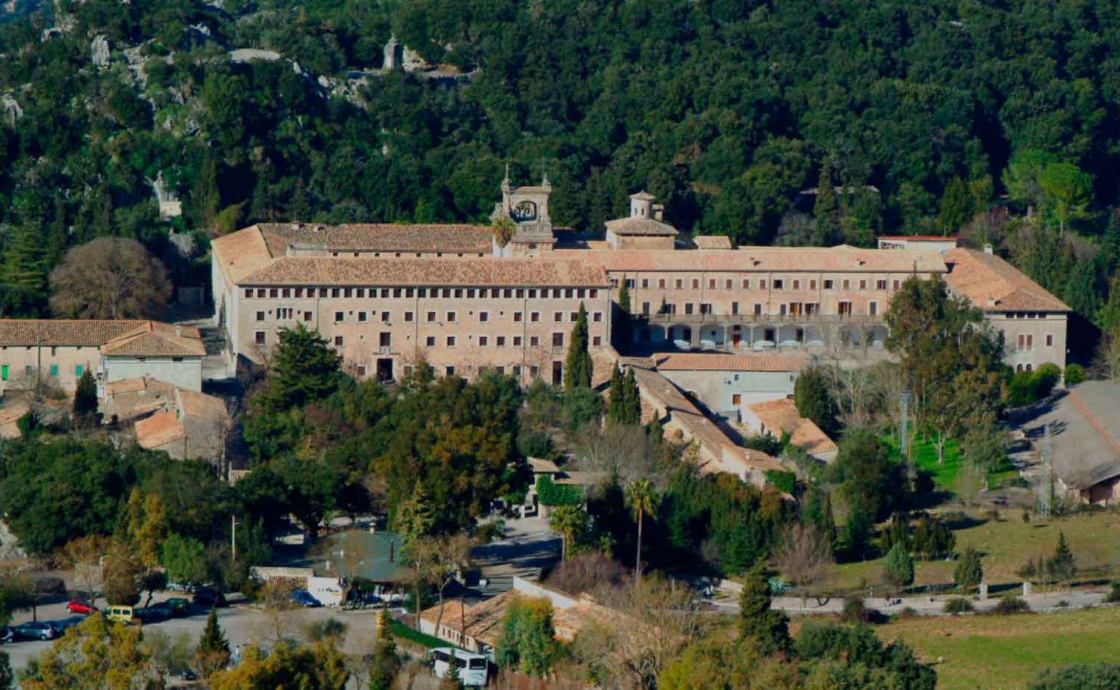
Visit to the Sanctuary of Lluc
Legend has it that a young shepherd was wandering in the Tramontana mountains when he discovered an image of the Virgin Mary while tending to his father's goat herd. It was in the mid-13th century. The image was taken to the local parish priest's house, but mysteriously, the next day it reappeared in the exact spot where it had been found.
This led to the conclusion that the Virgin wanted to remain there, so a chapel was built at the exact location of the discovery.
The Origins of the Monastery
Word spread gradually, and pilgrimages to the mountain began. In the 14th century, a guesthouse was built to accommodate the faithful, and a century later, a school was established in Lluc. Over time, more facilities and dependencies were added, forming the grand monastic complex that exists today.
The name of the mountain, Lluc, dates to Roman times and comes from "Lucus," which means sacred forest, hinting at the kind of energy this place holds. During the Muslim era, the name evolved into "Al-luc," and after the conquest of Mallorca, it became Lluc.
In 1891, the Diocese of Mallorca entrusted the management of the monastery to the Congregation of Missionaries of the Sacred Hearts, which continues its work to this day.
The Basilica of the Sanctuary of Lluc
The basilica of Lluc has a Latin cross plan, with a single nave, side chapels, and a barrel vault ceiling, except around the transept, which is crowned by a dome bearing the inscription "Ave María". The image of the Virgin, located in the main altarpiece, in a rotating niche that either presides over the basilica or is presented in a small rear chapel.
As it is a place of pilgrimage, there is an ambulatory around the main altar to allow visitors to move around without disturbing any religious ceremonies.
The interior of the basilica resembles a golden box, adorned with ornamental motifs that cover the walls and ceilings, culminating in the main altarpiece.
The exterior is dominated by stone. The elegant facade, with its Baroque ornamentation, was completed in the 20th century. It is believed that Antoni Gaudí provided guidance for its design.
In addition to the linteled entrance, the large clock stands out on the upper part of the facade, preceded by a balustrade. As a crowning feature, it displays a cross.
Other Activities to Enjoy in Lluc
The Lluc Monastery, amidst the mountains, is an ideal place for hiking, cycling routes, and various excursions to enjoy the unique environment and landscapes. But in addition:
- -Visitors can explore the museum, which houses a diverse collection of archaeological artifacts, ancient clothing, paintings, ceramics, and period furniture.
- -Take a walk along the Monte del Rosario route, a half-hour stroll that leads to the spot where, according to legend, the Virgin's statue was found.
- -Enjoy the botanical garden, which features over 200 species from the region, including a variety of aromatic and medicinal plants.
- -Listen to the Blauets, the choir of the Lluc School, named after the blue color ("blau" in Mallorcan) of the boys' cassocks.
- -And if the weather permits... take a dip in the icy waters of the swimming pool.




